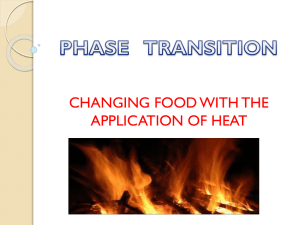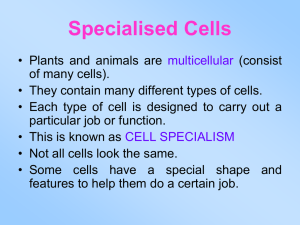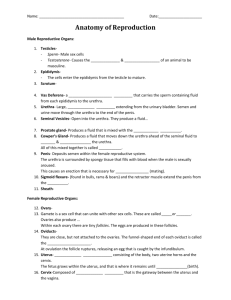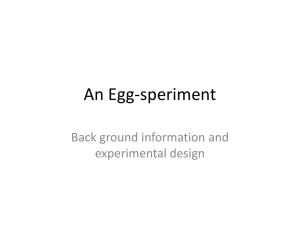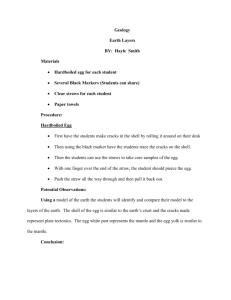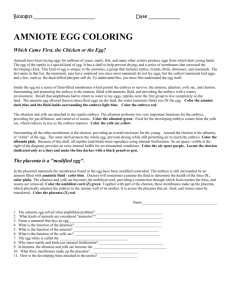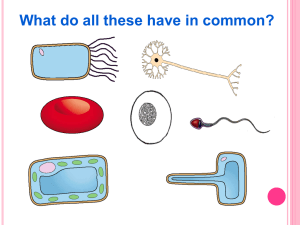Egg and Embryo Development: Chicken Egg Anatomy & Formation
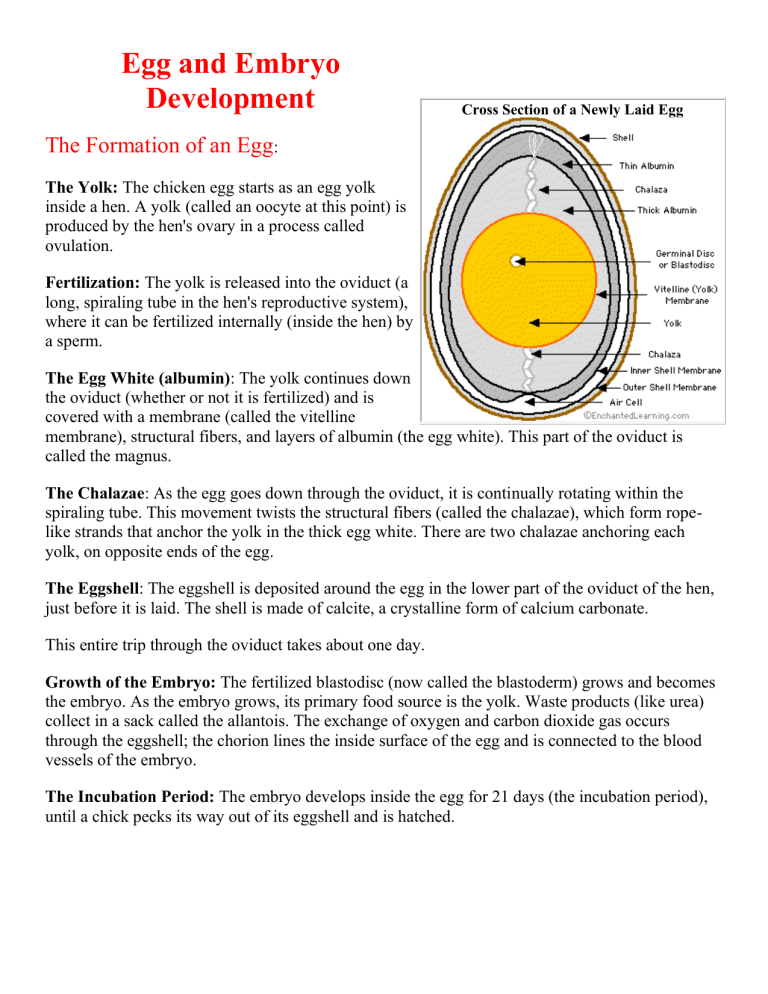
Egg and Embryo
Development
Cross Section of a Newly Laid Egg
The Formation of an Egg
:
The Yolk: The chicken egg starts as an egg yolk inside a hen. A yolk (called an oocyte at this point) is produced by the hen's ovary in a process called ovulation.
Fertilization: The yolk is released into the oviduct (a long, spiraling tube in the hen's reproductive system), where it can be fertilized internally (inside the hen) by a sperm.
The Egg White (albumin) : The yolk continues down the oviduct (whether or not it is fertilized) and is covered with a membrane (called the vitelline membrane), structural fibers, and layers of albumin (the egg white). This part of the oviduct is called the magnus.
The Chalazae : As the egg goes down through the oviduct, it is continually rotating within the spiraling tube. This movement twists the structural fibers (called the chalazae), which form ropelike strands that anchor the yolk in the thick egg white. There are two chalazae anchoring each yolk, on opposite ends of the egg.
The Eggshell : The eggshell is deposited around the egg in the lower part of the oviduct of the hen, just before it is laid. The shell is made of calcite, a crystalline form of calcium carbonate.
This entire trip through the oviduct takes about one day.
Growth of the Embryo: The fertilized blastodisc (now called the blastoderm) grows and becomes the embryo. As the embryo grows, its primary food source is the yolk. Waste products (like urea) collect in a sack called the allantois. The exchange of oxygen and carbon dioxide gas occurs through the eggshell; the chorion lines the inside surface of the egg and is connected to the blood vessels of the embryo.
The Incubation Period: The embryo develops inside the egg for 21 days (the incubation period), until a chick pecks its way out of its eggshell and is hatched.
Definitions :
air cell
- an empty space located at the large end of the egg; it is between the inner and outer shell membranes.
chalaza
- a spiral, rope-like strand that anchors the yolk in the thick egg white. There are two chalazae anchoring each yolk, one on the top and one on the bottom. (The plural of chalaza is chalazae.)
germinal disc or blastodisc
- a small, circular, white spot (2-3 mm across) on the surface of the yolk; it is where the sperm enters the egg. The nucleus of the egg is in the blastodisc.
inner shell membrane
- the thin membrane located between the outer shell membrane and the albumin.
outer shell membrane
- the thin membrane located just inside the shell.
shell
- the hard, protective coating of the egg. It is semi-permeable; it lets gas exchange occur, but keeps other substances from entering the egg. The shell is made of calcium carbonate.
thick albumin
- the stringy part of the egg white (albumin) located nearest the yolk.
thin albumin
- the watery part of the egg white (albumin) located farthest from the yolk.
vitelline (yolk) membrane
- the membrane that surrounds the yolk.
yolk
- the yellow, inner part of the egg where the embryo will form. The yolk contains the food that will nourish the embryo as it grows.
The Anatomy of a Chicken Egg
This came from a really nice breakdown of the various parts of a chicken egg at edinformatics.com
and I have duplicated the information below. I’ve always wondered what those white stringy things (Chalaza) are in my eggs when I make an omelet and now I know not only their name, but also what their function is inside the eggs!
1.
Eggshell – The outer eggshell is made almost entirely of calcium carbonate (CaCO3) and is covered with as many as 17,000 tiny pores. It is a semipermeable membrane, which allows air and moisture to pass through its pores. The shell also has a thin outermost coating called the bloom or cuticle that helps keep out bacteria and dust (see below 15).
2.
Outer shell membrane
3.
Inner shell membrane – These two membranes – outer and inner – are just inside the shell surrounding the albumen (white). The two membranes provide an efficient defense against bacterial invasion and are made partly of keratin. The outer membrane sticks to the egg shell while the inner membrane sticks to the albumen. When an egg is first laid, it is warm. As it cools, the contents contract and the inner shell membrane separates from the outer shell membrane to form the air cell (see 14 below).
4.
Chalaza – are twisted in opposite directions and serve to keep the yolk centered. The more prominent the chalazae, the fresher the egg.
5.
Exterior albumen (outer thin albumen) — The outer thin albumen is a narrow fluid layer next to the shell membrane.
6.
Middle albumen (inner thick albumen) -The inner thick white (chalaziferous layer) is a dense, matted, fibrous capsule of albumen around the vitelline membrane of the yolk. The matted fibrous capsule terminates on each end in the chalazae, which are twisted in opposite directions and serve to keep the yolk centered. This part of the egg is a excellent source of riboflavin and protein. In high-quality eggs, the inner thick albumen stands higher and spreads less than thin white. In low-quality eggs, it appears thin white.
7.
Vitelline membrane – The clear casing that encloses the egg yolk. When an egg is said to be “mottled”, the yolk surface is covered with many pale spots or blotches. The strength and integrity of the vitelline membrane are very important in preventing egg yolk mottling.
8.
Nucleus of pander – a plug of whitish yolk, with no particular significance for development and whose function is purely a nutritive one, like the rest of the yolk. (See: Int. Schmitt S., (2005) J. Dev. Biol. 49:
1-8).
9.
Germinal disk (blastoderm) – a small, circular, white spot (2-3 mm across) on the surface of the yolk; it is where the sperm enters the egg. The nucleus of the egg is in the blastodisc. The embryo develops from this disk, and gradually sends blood vessels into the yolk to use it for nutrition as the embryo develops.
10.
Yellow yolk – a major source of vitamins, minerals, almost half of the protein, and all of the fat and cholesterol. The yolk contains less water and more protein than the white, some fat, and most of the vitamins and minerals of the egg. These include iron, vitamin A, vitamin D, phosphorus, calcium, thiamine, and riboflavin. The yolk is also a source of lecithin, an effective emulsifier. Yolk color ranges from just a hint of yellow to a magnificent deep orange, according to the feed and breed of the hen.
11.
White yolk – Also known as, the latebra is an area of white yolk located in the center of the yolk. It is lower in fat and therefore stands out as a bright white area in many Magnetic Resonance Images. The specific function of the latebra is uncertain but it may act as a central structure around which the additional layers of the yolk are formed.
12.
Internal albumen (Chalaziferous albumen)– The inner thick white (chalaziferous layer) is a dense, matted, fibrous capsule of albumen around the vitelline membrane of the yolk. The matted fibrous capsule terminates on each end in the chalazae, which are twisted in opposite directions and serve to keep the yolk centered.
13.
Chalaza chalazae , which are twisted in opposite directions and serve to keep the yolk centered. The more prominent the chalazae, the fresher the egg. chalazae, which are twisted in opposite directions and serve to keep the yolk centered.
14.
Air cell – An air space forms when the contents of the egg cool and contract after the egg is laid. The air cell usually rests between the outer and inner membranes at the eggs larger end. As the egg ages, moisture and carbon dioxide leave through the pores of the shell, air enters to replace them and the air cell becomes larger.
15.
Cuticle or bloom – The shell is produced by the shell gland (uterus) of the oviduct, and has an outer coating, the bloom or cuticle. The cuticle somewhat seals the pores and is useful in reducing moisture losses and in preventing bacterial penetration of the egg shell. Most of cuticle is removed from table eggs when they are mechanically washed. http://www.enchantedlearning.com/subjects/birds/info/chicken/egg.shtml
Egg Trivia
The US produces about 75 billion eggs per year, about 10% of the world’s supply
Most chicken eggs are laid between 7 am and 11am
A large egg contains about 75 calories and contains 7 grams of high quality protein 28 calories, 5 grams of fat 45 calories, along with iron, vitamins, minerals, and carotenoids. The egg is a powerhouse of disease-fighting nutrients like lutein and zeaxanthin.

